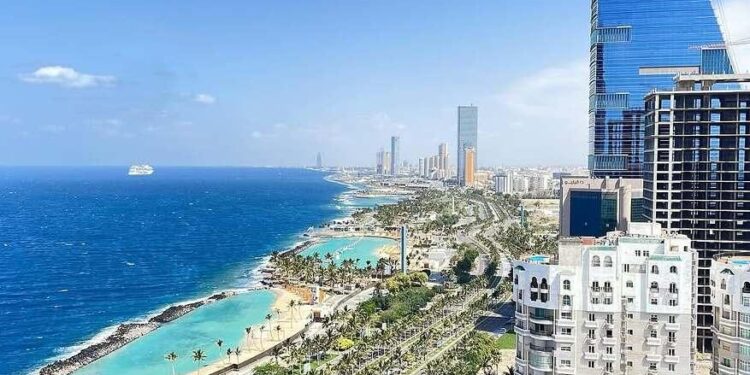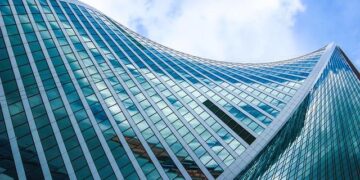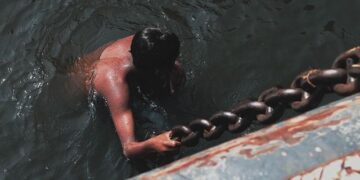Title: Reviving the Past: Mapping Historical Places to Boost Tourism in Jeddah
In an era where cultural heritage is increasingly recognized as a vital component of a region’s identity and economic viability, Jeddah, the bustling gateway to Mecca, is turning its historical treasures into a focal point for tourism. A recent study titled “Mapping the Historical Places: A Case Study of Promoting Tourism in Jeddah, the Kingdom of Saudi Arabia,” published on ResearchGate, sheds light on innovative strategies aimed at integrating Jeddah’s rich historical tapestry into its burgeoning tourism sector. As the Kingdom of Saudi Arabia continues its ambitious Vision 2030 initiative to diversify its economy and enhance its global image, the examination of Jeddah’s historical sites emerges as not only a means of preserving the past but also a way to engage a new generation of travelers eager for authentic experiences. This article explores how the careful mapping and promotion of Jeddah’s cultural landmarks can pave the way for sustainable tourism, foster community pride, and ultimately reshape the city’s future.
Exploring Jeddah’s Rich Historical Tapestry to Boost Tourism
Jeddah, known as the gateway to Mecca, boasts a rich historical tapestry that reflects centuries of cultural and architectural evolution. With its strategic coastal location along the Red Sea, this vibrant city has been a melting pot of diverse influences, evident in its stunning historic districts. Al-Balad, a UNESCO World Heritage site, enchants visitors with its traditional coral stone houses and bustling souks. Highlights include:
- Nasif House: A prime example of traditional architecture, housing exhibits that narrate the city’s past.
- Old Jeddah Gate: An iconic entry point that symbolizes the city’s historical significance as a trade hub.
- Souk Al Alawi: A lively market where visitors can experience local culture through shopping and dining.
Efforts to boost tourism are evident in the revitalization initiatives aimed at preserving the city’s heritage. By mapping out historical landmarks, stakeholders can create engaging itineraries that showcase Jeddah’s artistic and cultural treasures. A recent study highlights the importance of promoting key attractions, such as:
| Attraction | Significance |
|---|---|
| King Fahd Fountain | One of the tallest fountains worldwide, symbolizing Jeddah’s modern aspirations. |
| Floating Mosque | A breathtaking architectural feat that invites contemplation and spirituality. |
Strategic Insights for Sustainable Heritage Promotion in Jeddah
The promotion of Jeddah’s rich heritage is crucial for sustainable tourism development. By strategically leveraging its historical sites, stakeholders can enhance the visitor experience while preserving the unique cultural identity of the region. To achieve this, a multi-faceted approach is essential, focusing on the integration of modern technology and innovative marketing strategies. Key initiatives should include:
- Digital storytelling: Utilizing interactive platforms to narrate the stories behind historical landmarks.
- Community engagement: Involving local residents in tourism planning to ensure that cultural practices are respected and highlighted.
- Collaborative partnerships: Aligning with local businesses and organizations to create a cohesive tourism ecosystem.
Moreover, effective mapping of historical places can serve as a foundational tool in attracting tourists. With the advent of Geographic Information Systems (GIS), stakeholders can visualize and analyze heritage sites, making it easier to promote them and improve accessibility. The potential benefits of this mapping approach include:
| Benefit | Description |
|---|---|
| Increased visibility | Enhancing awareness of lesser-known sites through digital maps. |
| Enhanced accessibility | Providing clear directions and information for tourists to navigate heritage sites. |
| Historical context | Offering insights into the significance and narratives of each location. |
Recommendations for Enhancing Visitor Experience at Historical Sites
Enhancing visitor experience at historical sites requires a multifaceted approach that integrates technology, community engagement, and educational initiatives. Interactive mobile applications can significantly improve the way visitors engage with the history surrounding them. For instance, augmented reality features could bring ancient artifacts to life, enabling tourists to visualize how historical sites functioned in their prime. Additionally, mobile guides can provide contextual information, enabling visitors to delve into the rich narratives that define each location. Establishing multilingual resources will also cater to a diverse audience, ensuring that language barriers do not hinder the storytelling of cultural heritage.
Furthermore, collaboration with local communities can enrich visitor experiences while fostering cultural pride. Organizing workshops led by local artisans or historians can create immersive experiences that educate tourists on traditional skills and practices. Access to guided tours by community members could present authentic perspectives on the historical significance of sites. Moreover, implementing feedback mechanisms such as visitor surveys will allow site managers to continually adapt and improve the visitor experience based on actual user insights. By prioritizing these strategies, historical sites can become vital hubs of cultural interaction and learning, enhancing their appeal to both local and international visitors.
Final Thoughts
In conclusion, the case study outlined in “(PDF) Mapping the Historical Places: A Case Study of Promoting Tourism in Jeddah, the Kingdom of Saudi Arabia” offers valuable insights into the intersection of culture and tourism. By utilizing modern mapping techniques, researchers have underscored the importance of Jeddah’s rich historical tapestry, showcasing its potential to attract both local and international tourists. As Saudi Arabia continues to diversify its economy, fostering a deeper appreciation for its historical sites could significantly enhance the tourism sector and contribute to sustainable economic growth. The findings call for a collaborative effort among stakeholders to develop engaging experiences that highlight Jeddah’s unique heritage while preserving its integrity for future generations. As the Kingdom embarks on this transformative journey, the successful promotion of its historical treasures could serve as a model for other regions seeking to blend history with modern tourism strategies.














